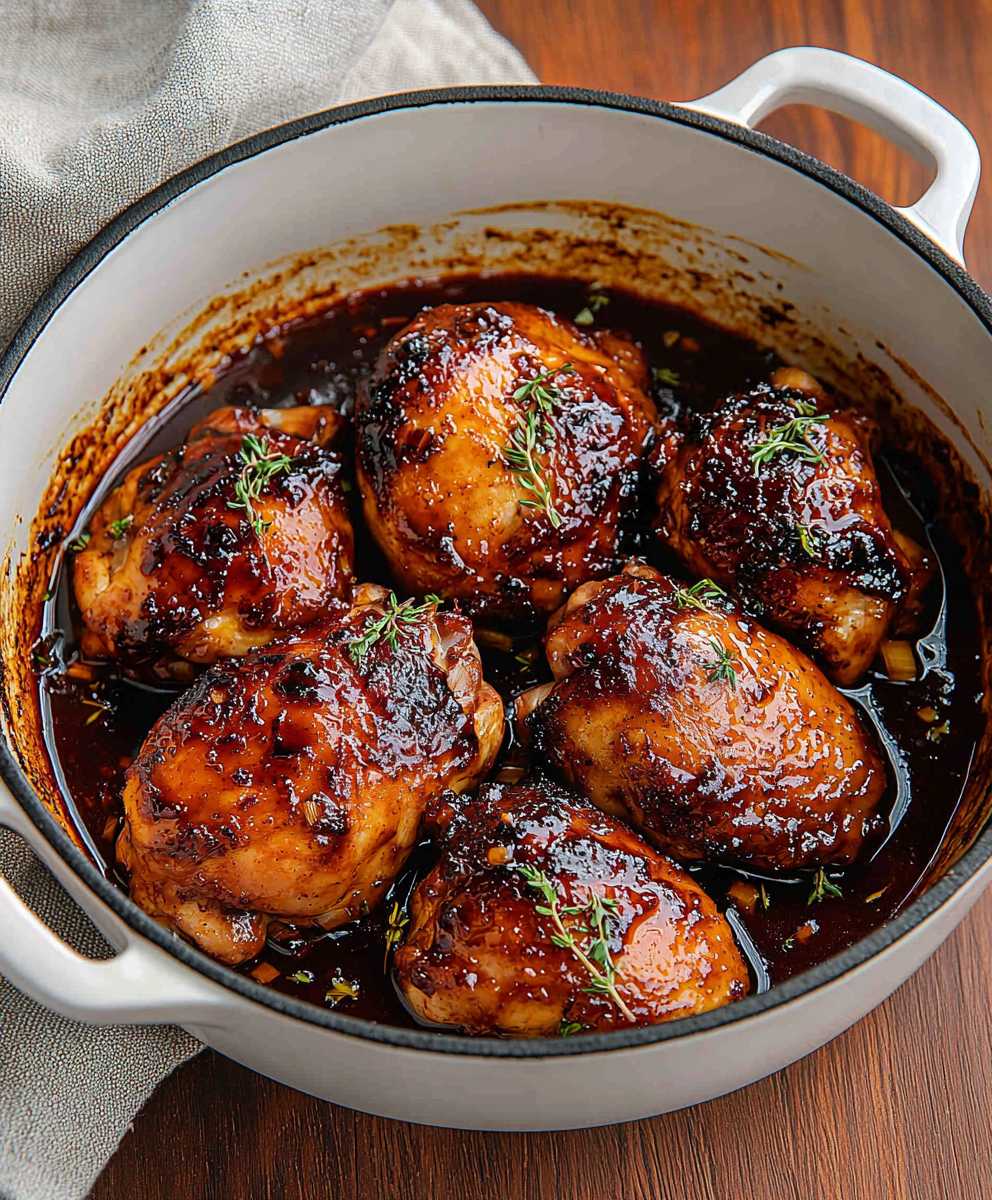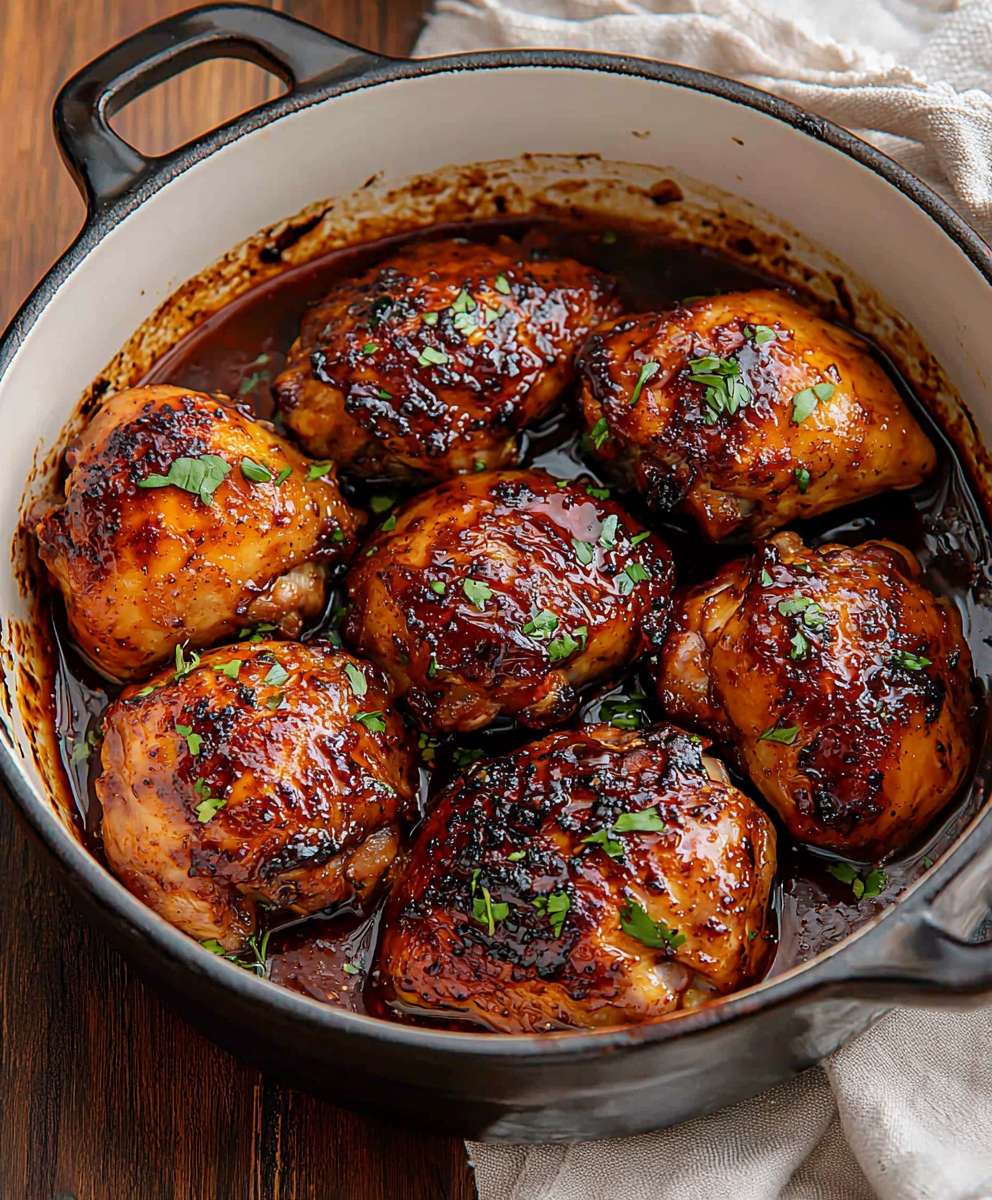Filipino Adobo Chicken: just the name conjures up images of savory, tangy, and utterly irresistible comfort food, doesn’t it? Imagine tender chicken, simmered to perfection in a rich, garlicky sauce that’s both deeply satisfying and surprisingly simple to make. This isn’t just a recipe; it’s an invitation to experience a cornerstone of Filipino cuisine.
Adobo, derived from the Spanish word “adobar” meaning “to marinade,” has a history as rich and complex as its flavor profile. While the name might have Spanish origins, the method of preserving meat in vinegar, salt, and garlic is distinctly Filipino, predating Spanish colonization. It was a practical way to keep food from spoiling in the tropical climate, and over time, it evolved into the beloved dish we know today.
What makes Filipino Adobo Chicken so universally adored? It’s the perfect balance of flavors – the salty soy sauce, the tangy vinegar, the pungent garlic, and the subtle sweetness of bay leaves all working in harmony. The chicken becomes incredibly tender, practically falling off the bone, and the sauce is so good you’ll want to drizzle it over everything! Plus, it’s incredibly versatile. Serve it with rice, noodles, or even as a filling for tacos or sandwiches. It’s a guaranteed crowd-pleaser and a fantastic way to introduce yourself (or others!) to the vibrant world of Filipino food. Let’s get cooking!
Ingredients:
- 2 lbs chicken pieces (thighs, drumsticks, and wings work best)
- 1 large onion, quartered
- 6-8 cloves garlic, minced
- 1/2 cup soy sauce (Filipino soy sauce is preferred, but any good quality soy sauce will do)
- 1/4 cup white vinegar (or apple cider vinegar)
- 1 cup water
- 2 tablespoons cooking oil
- 1 tablespoon whole peppercorns
- 2-3 bay leaves
- 1 teaspoon sugar (optional, but balances the flavors nicely)
- Salt to taste (be careful, soy sauce is already salty!)
- Optional: 1-2 dried chilies for a little heat
Preparing the Chicken and Aromatics
- First, let’s get our chicken ready. You can use any cut you like, but I find that bone-in, skin-on pieces like thighs and drumsticks give the best flavor and stay nice and moist. If you’re using whole chicken pieces, you can leave them as is, or cut them into smaller, more manageable portions. Pat the chicken dry with paper towels. This helps it brown better later on.
- Now, let’s prep the aromatics. Quarter your large onion. Don’t worry about making them too small, as they’ll cook down quite a bit. Mince your garlic. I like to use a garlic press, but you can also finely chop it with a knife. The more garlic, the better, in my opinion!
- Gather all your other ingredients: soy sauce, vinegar, water, peppercorns, bay leaves, sugar (if using), and salt. Having everything measured out and ready to go makes the cooking process much smoother.
The Cooking Process
- Heat the cooking oil in a large pot or Dutch oven over medium-high heat. Make sure the pot is big enough to hold all the chicken pieces comfortably without overcrowding.
- Once the oil is hot, add the chicken pieces to the pot, skin-side down if using skin-on pieces. Brown the chicken on all sides. This step is crucial for developing flavor, so don’t rush it. You might need to do this in batches to avoid overcrowding the pot. Overcrowding will lower the temperature of the oil and cause the chicken to steam instead of brown. Set the browned chicken aside.
- Add the quartered onions to the pot and cook until they soften and become translucent, about 5-7 minutes. Stir occasionally to prevent them from burning.
- Add the minced garlic to the pot and cook for about 1 minute, or until fragrant. Be careful not to burn the garlic, as it can become bitter.
- Pour in the soy sauce and vinegar. Let it simmer for a minute or two, allowing the vinegar to cook off slightly. This helps to mellow out the acidity.
- Add the water, peppercorns, bay leaves, and sugar (if using) to the pot. Stir to combine all the ingredients.
- Return the browned chicken pieces to the pot, making sure they are mostly submerged in the liquid. If needed, add a little more water to cover the chicken.
- Bring the mixture to a boil, then reduce the heat to low, cover the pot, and simmer for at least 45 minutes to 1 hour, or until the chicken is very tender and easily pulls away from the bone. The longer it simmers, the more flavorful it will become.
- After 45 minutes, check the chicken for tenderness. If it’s not quite there yet, continue to simmer for another 15-30 minutes.
- Once the chicken is cooked through, remove the lid and increase the heat to medium-high. Let the sauce reduce and thicken to your desired consistency. This usually takes about 10-15 minutes. Keep a close eye on it and stir occasionally to prevent it from burning. The sauce should be glossy and coat the chicken nicely.
- Taste the sauce and adjust the seasoning as needed. Add salt to taste, but remember that the soy sauce is already salty, so be careful not to over-salt. You can also add a little more sugar if you prefer a sweeter adobo.
Serving Suggestions
- Serve the chicken adobo hot over steamed rice. The rice soaks up the delicious sauce perfectly.
- Garnish with chopped green onions or a sprinkle of toasted sesame seeds for added flavor and visual appeal.
- Adobo is even better the next day, as the flavors have had time to meld together. Store leftovers in an airtight container in the refrigerator for up to 3-4 days.
- You can also shred the chicken and use it in tacos, sandwiches, or salads.
- For a spicier adobo, add 1-2 dried chilies to the pot during the simmering process.
- Some people like to add potatoes or hard-boiled eggs to their adobo. If you want to try this, add them to the pot during the last 20-30 minutes of cooking time.
Tips and Tricks for the Best Adobo
- Use good quality ingredients. The better the quality of your soy sauce and vinegar, the better your adobo will taste.
- Don’t skip the browning step. Browning the chicken is essential for developing flavor.
- Simmer, don’t boil. Simmering the chicken slowly allows it to become incredibly tender and flavorful.
- Reduce the sauce. Reducing the sauce at the end concentrates the flavors and creates a delicious, glossy glaze.
- Taste and adjust the seasoning. Adobo is all about balancing the flavors of soy sauce, vinegar, and garlic. Taste the sauce and adjust the seasoning to your liking.
- Let it rest. Allowing the adobo to rest for a few minutes before serving allows the flavors to meld together even more.
- Experiment with different variations. There are many different variations of adobo, so don’t be afraid to experiment and find your favorite. Some people add coconut milk, pineapple juice, or even peanut butter to their adobo.
- Don’t be afraid to adjust the soy sauce to vinegar ratio. Some people prefer a more vinegary adobo, while others prefer a saltier one. Adjust the ratio to your liking.
- Use a heavy-bottomed pot. A heavy-bottomed pot will help to prevent the adobo from burning.
- Store leftovers properly. Store leftovers in an airtight container in the refrigerator for up to 3-4 days. Reheat gently on the stovetop or in the microwave.
Variations on the Classic Adobo
While the recipe above is for a classic chicken adobo, there are countless variations you can try to customize it to your own taste. Here are a few ideas:
Pork Adobo
Substitute the chicken with 2 lbs of pork shoulder or pork belly, cut into 2-inch cubes. Follow the same cooking instructions as for the chicken adobo. Pork adobo often benefits from a longer simmering time to become extra tender.
Seafood Adobo
Use 1-2 lbs of shrimp, squid, or fish fillets. Add the seafood to the pot during the last 10-15 minutes of cooking time, as it cooks very quickly. Be careful not to overcook the seafood, or it will become tough.
Vegetarian Adobo
Use 1-2 lbs of firm tofu, tempeh, or vegetables like eggplant, mushrooms, or green beans. Cut the tofu or tempeh into cubes and brown them in the pot before adding the other ingredients. Add the vegetables during the last 20-30 minutes of cooking time.
Adobo sa Gata (Adobo with Coconut Milk)
Add 1 can (13.5 oz) of coconut milk to the pot along with the water. The coconut milk adds a creamy richness to the adobo.
Spicy Adobo
Add 1-2 dried chilies or a pinch of chili flakes to the pot along with the peppercorns. You can also add a tablespoon of sriracha or other hot sauce to the sauce at the end of cooking time.
Sweet Adobo
Increase the amount of sugar to 2-3 teaspoons. You can also add a tablespoon of brown sugar or honey for a deeper sweetness.
Adobo with Potatoes and Eggs
Add 2-3 potatoes, peeled and cubed, and 4-6 hard-boiled eggs to the pot during the last 20-30 minutes of cooking time. The potatoes will absorb the flavorful sauce, and the eggs will add a creamy richness to the dish.
Dry
Conclusion:
This isn’t just another chicken recipe; it’s a journey to the heart of Filipino cuisine. The Filipino Adobo Chicken, with its intoxicating blend of soy sauce, vinegar, garlic, and peppercorns, is a symphony of flavors that will dance on your palate. The tender, succulent chicken, infused with the rich, savory sauce, is a testament to the simple yet profound beauty of Filipino cooking. I truly believe this is a must-try recipe for anyone looking to expand their culinary horizons and experience authentic flavors.
But why is this particular adobo recipe so special? It’s the perfect balance of sweet, salty, and tangy, achieved through careful simmering and the harmonious interaction of the ingredients. The vinegar tenderizes the chicken beautifully, while the soy sauce provides a deep umami richness. The garlic and peppercorns add a delightful aromatic complexity that elevates the dish to another level. It’s a dish that’s both comforting and exciting, familiar yet surprisingly nuanced.
And the best part? It’s incredibly versatile! Serve it over fluffy white rice to soak up all that delicious sauce – that’s the classic way to enjoy it. But don’t stop there! You can also shred the chicken and use it as a filling for tacos or spring rolls. Imagine the burst of flavor in every bite! Or, try adding some potatoes and carrots to the pot during the last 30 minutes of cooking for a heartier, more complete meal. For a spicier kick, add a few chopped chili peppers or a dash of chili flakes.
Looking for variations? Consider using chicken thighs instead of chicken breasts for an even richer flavor. Or, try adding a bay leaf or two to the pot for an extra layer of aroma. Some people even add a touch of brown sugar for a sweeter adobo. The possibilities are endless! Feel free to experiment and find the combination that best suits your taste.
I’ve poured my heart into perfecting this recipe, and I’m confident that you’ll love it as much as I do. It’s a dish that’s perfect for a weeknight dinner, a weekend gathering, or any occasion that calls for a delicious and satisfying meal. It’s also a great way to introduce friends and family to the wonders of Filipino food.
So, what are you waiting for? Gather your ingredients, put on your apron, and get ready to embark on a culinary adventure. I promise you, this Filipino Adobo Chicken recipe will not disappoint. It’s a dish that’s sure to become a staple in your kitchen.
I’m so excited for you to try this recipe! Once you’ve made it, please come back and share your experience in the comments below. I’d love to hear what you think, what variations you tried, and how you served it. Your feedback is invaluable and helps me to continue improving my recipes. Don’t be shy – let me know what you loved, what you changed, and any tips you have for other readers. Happy cooking! I can’t wait to hear about your adobo adventures!
Filipino Adobo Chicken: The Ultimate Guide to Authentic Taste
Tender chicken simmered in a savory, tangy, and garlicky soy sauce and vinegar-based sauce. A flavorful and comforting Filipino dish perfect over rice.
Ingredients
- 2 lbs chicken pieces (thighs, drumsticks, and wings work best)
- 1 large onion, quartered
- 6-8 cloves garlic, minced
- 1/2 cup soy sauce (Filipino soy sauce is preferred, but any good quality soy sauce will do)
- 1/4 cup white vinegar (or apple cider vinegar)
- 1 cup water
- 2 tablespoons cooking oil
- 1 tablespoon whole peppercorns
- 2-3 bay leaves
- 1 teaspoon sugar (optional, but balances the flavors nicely)
- Salt to taste (be careful, soy sauce is already salty!)
- Optional: 1-2 dried chilies for a little heat
Instructions
- Prepare the Chicken and Aromatics: Pat the chicken dry with paper towels. Quarter the onion and mince the garlic. Gather all other ingredients.
- Brown the Chicken: Heat the cooking oil in a large pot or Dutch oven over medium-high heat. Brown the chicken on all sides in batches, then set aside.
- Sauté Aromatics: Add the quartered onions to the pot and cook until softened, about 5-7 minutes. Add the minced garlic and cook until fragrant, about 1 minute.
- Simmer: Pour in the soy sauce and vinegar. Let it simmer for a minute or two. Add the water, peppercorns, bay leaves, and sugar (if using). Return the chicken to the pot, ensuring it’s mostly submerged. Add more water if needed.
- Cook: Bring to a boil, then reduce heat to low, cover, and simmer for 45 minutes to 1 hour, or until the chicken is very tender.
- Reduce Sauce: Remove the lid and increase the heat to medium-high. Let the sauce reduce and thicken to your desired consistency, about 10-15 minutes, stirring occasionally.
- Season: Taste the sauce and adjust the seasoning as needed. Add salt to taste, being mindful of the soy sauce. Add more sugar if desired.
- Serve: Serve hot over steamed rice. Garnish with chopped green onions or toasted sesame seeds.
Notes
- Use good quality soy sauce and vinegar for the best flavor.
- Browning the chicken is essential for developing flavor.
- Simmer, don’t boil, for tender chicken.
- Reducing the sauce concentrates the flavors.
- Taste and adjust the seasoning to your liking.
- Adobo is even better the next day! Store leftovers in an airtight container in the refrigerator for up to 3-4 days.
- For a spicier adobo, add 1-2 dried chilies during simmering.
- Experiment with variations like pork, seafood, or vegetarian adobo.
- Consider adding potatoes or hard-boiled eggs during the last 20-30 minutes of cooking.





